Chili - The Spice of Life
Chili, a beloved spice used worldwide, is a versatile ingredient that adds depth, flavor, and heat to any dish. Known for its rich, spicy kick, chili peppers come in various forms, including fresh, dried, powdered, and as chili sauce or oil. Whether you're an adventurous cook or someone who enjoys adding a touch of heat to your meals, chili products offer the perfect solution.
Fresh Chili Peppers are vibrant, juicy, and packed with heat. From mild to extremely spicy varieties, fresh chilies can be sliced, diced, or used whole to infuse dishes with their pungent aroma. Great for stir-fries, salsas, and curries, fresh chilies add a fresh and bold flavor to your meals.
Dried Chili Peppers are perfect for slow-cooking and flavor extraction. When dried, chilies intensify their heat and smokiness. You can use them whole, ground into chili powder, or rehydrate them to create sauces and soups with a complex depth of flavor.
Chili Powder is a staple in kitchens around the world. A blend of dried chili peppers and other spices like cumin and garlic, chili powder adds a punch of heat and a savory aroma to dishes. Perfect for seasoning meats, soups, stews, and even grilled vegetables, chili powder offers convenience without compromising on flavor.
Chili Sauces and Oils are excellent for those who prefer a ready-to-use option. These products combine chili with ingredients like garlic, vinegar, or sesame oil to create flavorful sauces and oils that elevate your dishes instantly. Whether you like it sweet, tangy, or fiery, chili sauces and oils are perfect for dipping, marinating, or adding to your favorite foods.
Enhance your culinary creations with chili – a bold, flavorful ingredient that brings spice and excitement to every meal!
-
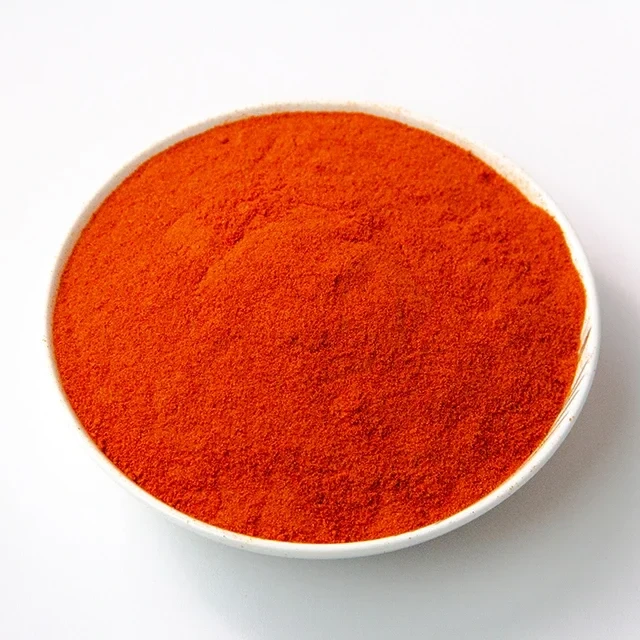
chili ntụ ntụ-30,000SHU
30,000SHUAnyị bụ onye na-emepụta ihe na onye na-ebupụ ngwaahịa chili akọrọ na-acha uhie uhie na China nke e guzobere na 1996. Dị n'ebe ọwụwa anyanwụ nke Longyao County, na South Qinan Road. Ọ dị 100km site na Shijiazhuang, 360km site na Beijing, 320km site na ọdụ ụgbọ mmiri Tianjin na 8km site na Jingshen Highway. Anyị ụlọ ọrụ na-ewe uru nke ọgaranya eke akụ na adaba njem.We nwere ike na-enye gị akọrọ red chilli, chilli anuahade, chilli ntụ ntụ, chilli osisi mmanụ, paprika, chili osisi mmanụ etc.Our ngwaahịa e gafere CIQ,SGS,FDA,ISO22000. ..nwere ike iru ọkọlọtọ nke Jpan,EU, USA wdg.
-
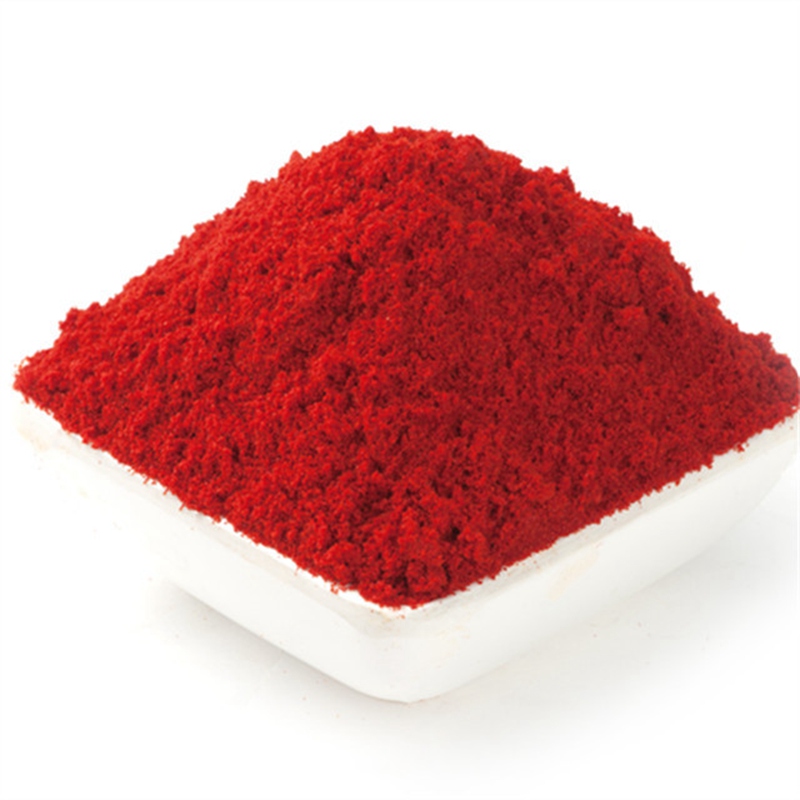
Paprika ntụ ntụ 2
Ọ bụghị oseoseNke a na-atọ ụtọ paprika ntụ ntụ bụ 100% eke na-enweghị ihe mgbakwunye ọ bụla, na-egosipụta agba na-acha uhie uhie, ekpomeekpo pụrụ iche na àgwà pụtara ìhè. Ọ bụ ihe na-esi ísì ụtọ na-adịghị esi ísì ụtọ nke a pụrụ iji mee ka agba nke efere dị mma, na-eme ka ọ bụrụ ihe na-adọrọ adọrọ. Àgwà pụrụ iche nke ntụ ntụ paprika anyị dị ụtọ na-eme ka ọ bụrụ nhọrọ dịgasị iche iche na-adọrọ mmasị maka ndị na-anụ ọkụ n'obi.
Paprika ntụ ntụ anyị na-atọ ụtọ na-enye nhọrọ nhazi maka agba dị iche iche, na nkwakọ ngwaahịa. anyị na-agba mbọ nabata mkpa nhazi nhazi dị iche iche.
-
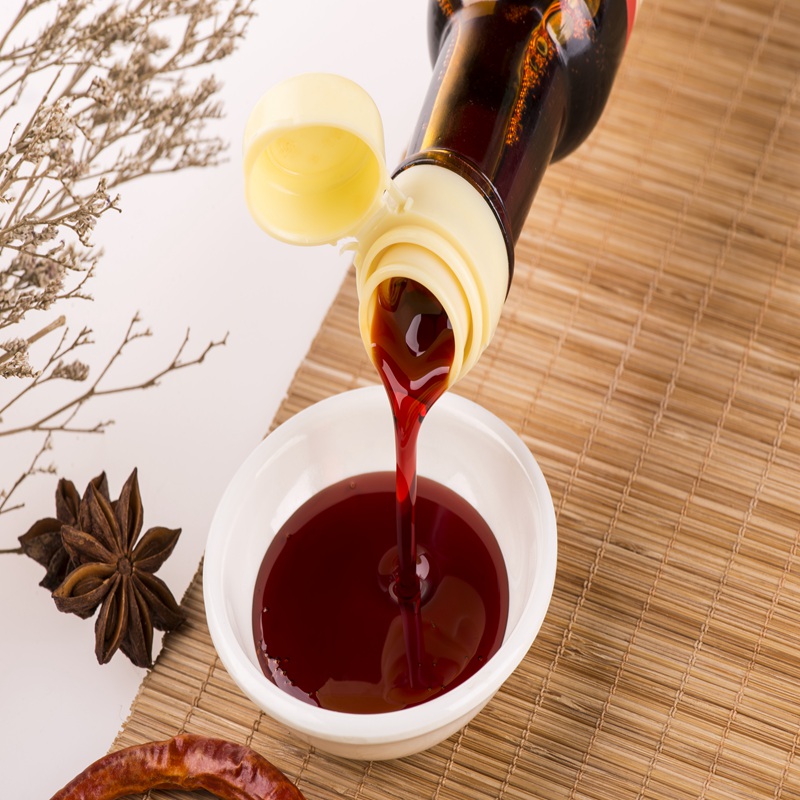
Mmanụ chili Benzopyrene<2, Acid<3 (meet the Korean standards)
Jiri mmanụ mkpụrụ chili adịchaghị anyị nweta ụdị ọmarịcha nri nri. N'ịbụ nke sitere na ntanye anụ ahụ, ọ bụghị mmịpụta kemịkal, mmiri a na-ahụ anya na-anya isi ịdị ọcha na-enweghị atụ. Na-adịghị ọcha, sedimenti, senti na ihe ndị na-acha agba agba, mmanụ anyị bụ ihe akaebe na-adịghị mma.
Anyị na-eme nke ọma n'ịchịkwa ọkwa benzopyrene na acid, na-emezu ụkpụrụ siri ike nke South Korea setịpụrụ. A na-ebupụ ya mgbe niile na South Korea, ngwaahịa anyị na-emesi nghọta, enweghị ihe fọdụrụ, yana nrube isi na njikwa mma. Site na asambodo CIQ, enwere ike ibupu mmanụ chili anyị na mba ọ bụla.
Jiri obi ike bulie efere gị elu, ebe ị maara na ị nwere mmanụ mkpụrụ chili kacha mma na palette nri gị. Mee nhọrọ doro anya maka ndị na-ebute ịdị ọcha na ahụike ụzọ na nri ha.
-
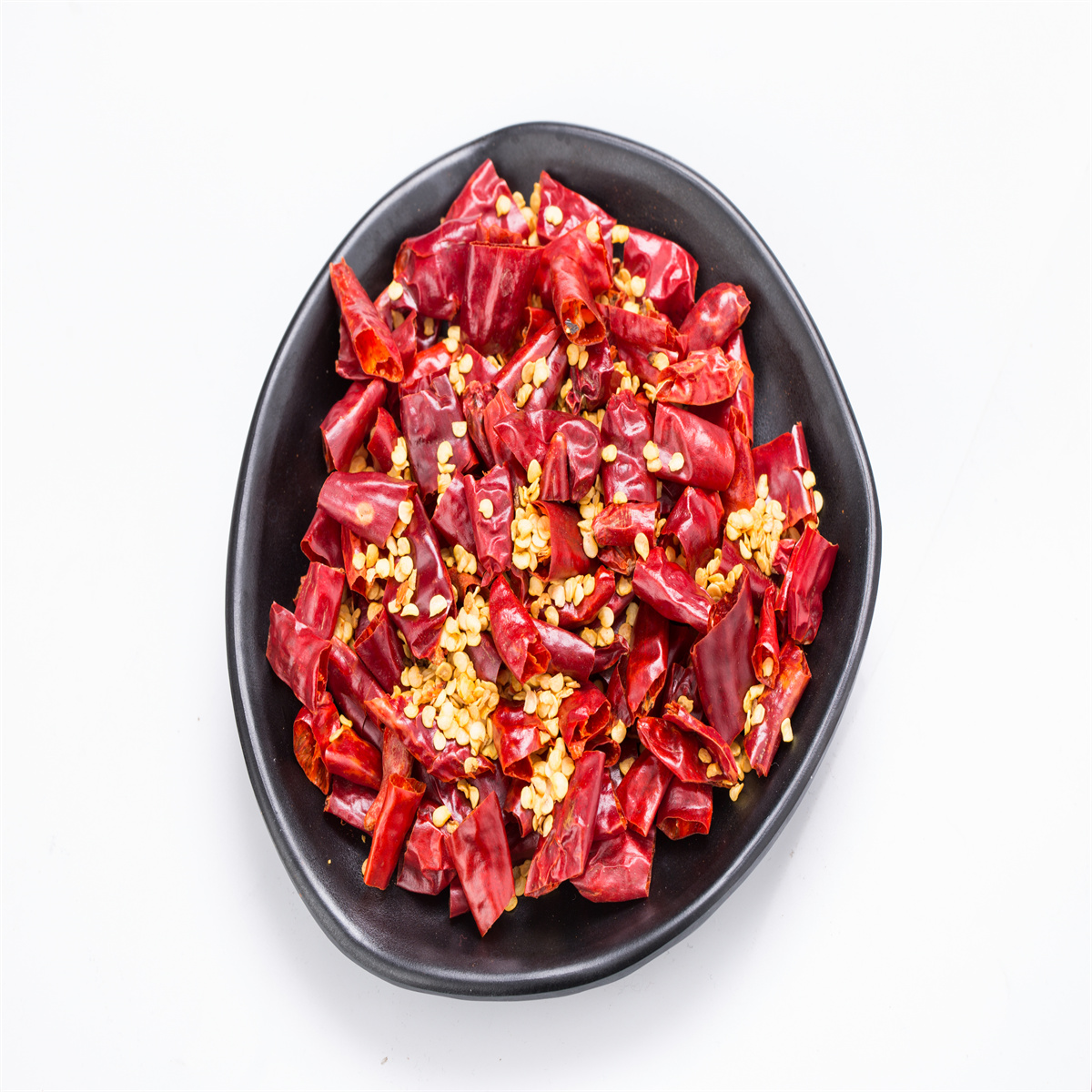
Ọgbọ ọhụrụ chili ịkpụ
30,000-40,000SHUMkpụcha chili a bụ ihe okike 100% na-enweghị mgbakwunye ọ bụla, na-egosipụta agba uhie na-acha ọbara ọbara, ekpomeekpo pụrụ iche, ose na-agbanwe agbanwe, na ịdị mma pụtara ìhè. Ọ na-eje ozi dị ka isi nri ọzọ dị mma, na-enye ndị na-azụ ahịa ohere ịhazigharị ọkwa nke ose dị na efere ha dabere na mmasị onwe onye. Àgwà pụrụ iche nke ịkpụ chili anyị na-eme ka ọ bụrụ nhọrọ na-adọrọ adọrọ maka ndị na-anụ ọkụ n'obi.
Mbelata chili anyị na-enye nhọrọ nhazi maka ogologo dị iche iche na oke mkpụrụ. anyị na-agba mbọ nabata mkpa nhazi nhazi dị iche iche.
-
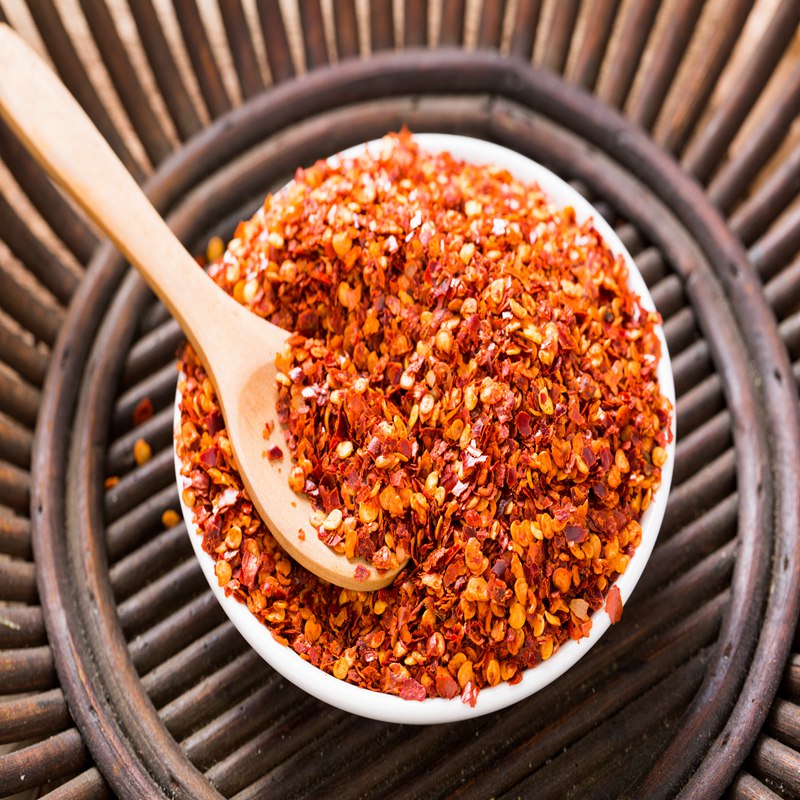
chili egweri-80,000SHU
80,000SHUose a na-acha uhie uhie a gwepịara egwepịa, bụ́ nke ụlọ ọrụ mmepụta ihe anyị rụpụtara, nwere ikike imepụta ihe dị elu. N'ịbụ ndị a ma ama maka izi ezi na ịrụ ọrụ nke ọma, ike nrụpụta anyị na-ahụ na ngwaahịa na-agbanwe agbanwe na nke kachasị mma. Site na akụrụngwa ọgbara ọhụrụ yana nka nka, anyị na-eme nke ọma n'iwepụta ọmarịcha nri nri. Nkwenye anyị maka imepụta ihe ọhụrụ na njikwa mma na-ekewa anyị iche, na-enye ndị isi nri na ezinụlọ ebe a pụrụ ịdabere na ya nke ose na-acha uhie uhie na-echi ọnụ. Tụkwasa obi na ike mmepụta anyị, ebe teknụzụ dị elu na-ezute nka nke nhazi chili, na-ahụ na ọkụ ọ bụla na-acha ọkụ na-agbakwunye izu oke na ihe okike gị.
-
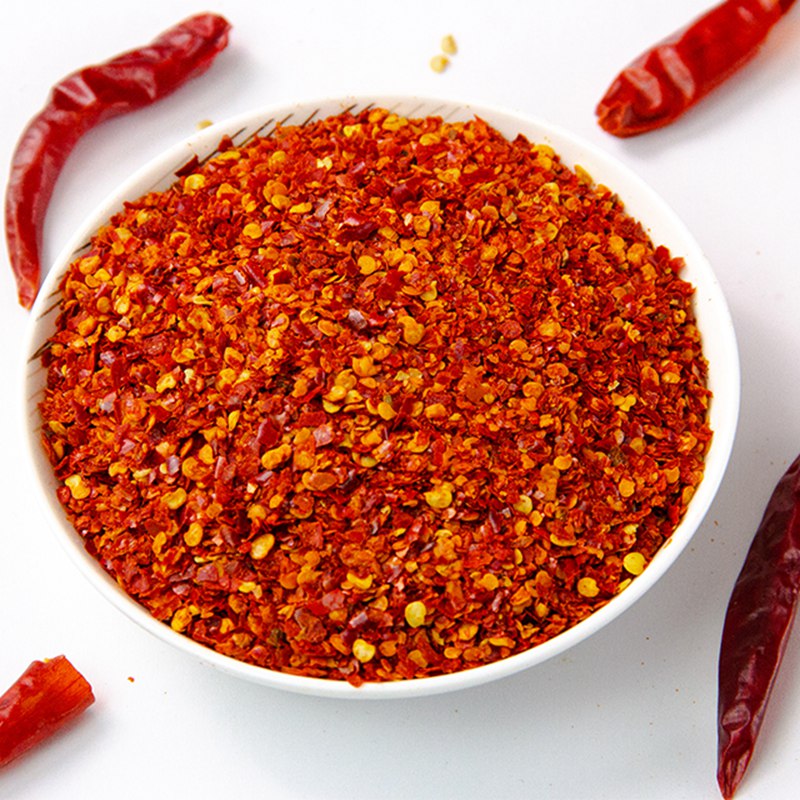
chili egweri - 35,000SHU
35,000SHUChili a gwepịara egwepịa bụ ihe okike 100% na-enweghị mgbakwunye ọ bụla, na-egosipụta agba uhie na-acha uhie uhie, ekpomeekpo pụrụ iche, ose na-agbanwe agbanwe, na ịdị mma pụtara ìhè. Ọ na-eje ozi dị ka isi nri ọzọ dị mma, na-enye ndị na-azụ ahịa ohere ịhazigharị ọkwa nke ose dị na efere ha dabere na mmasị onwe onye. Àgwà pụrụ iche nke chili anyị gwepịara ọnụ na-eme ka ọ bụrụ nhọrọ na-adọrọ adọrọ maka ndị na-anụ ọkụ n'obi.
Anyị chili anuahade awade customizable nhọrọ maka dị iche iche spiciness etoju, agba, urughuru size na nkwakọ. anyị na-agba mbọ nabata mkpa nhazi nhazi dị iche iche.
-
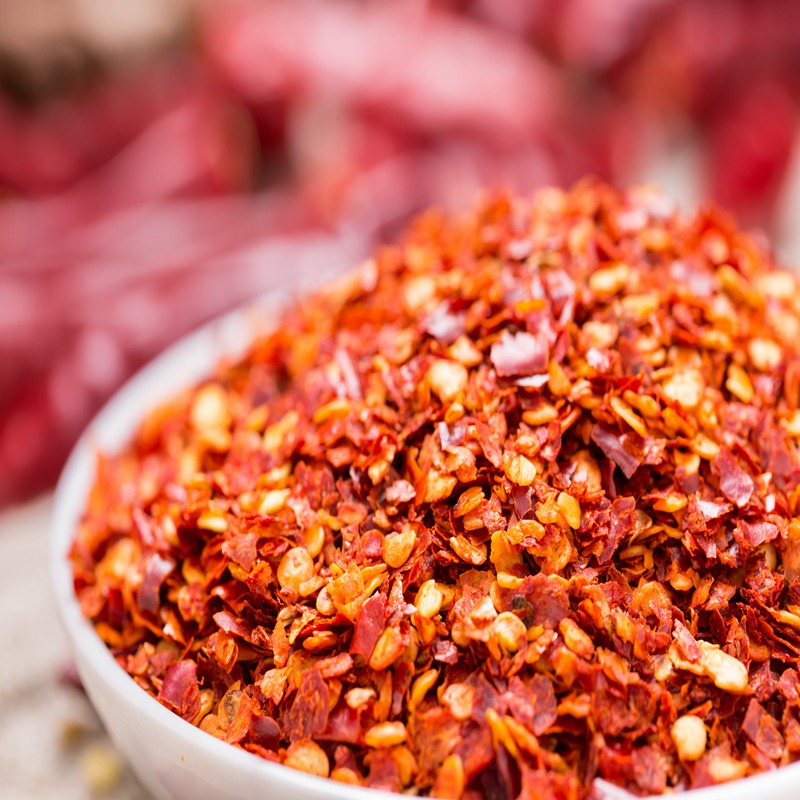
chili egweri-30,000-40,000SHU
30,000-40,000SHUChili a gwepịara egwepịa bụ ihe okike 100% na-enweghị mgbakwunye ọ bụla, na-egosipụta agba uhie na-acha uhie uhie, ekpomeekpo pụrụ iche, ose na-agbanwe agbanwe, na ịdị mma pụtara ìhè. Ọ na-eje ozi dị ka isi nri ọzọ dị mma, na-enye ndị na-azụ ahịa ohere ịhazigharị ọkwa nke ose dị na efere ha dabere na mmasị onwe onye. Àgwà pụrụ iche nke chili anyị gwepịara ọnụ na-eme ka ọ bụrụ nhọrọ na-adọrọ adọrọ maka ndị na-anụ ọkụ n'obi.
Anyị chili anuahade awade customizable nhọrọ maka dị iche iche spiciness etoju, agba, urughuru size na nkwakọ. anyị na-agba mbọ nabata mkpa nhazi nhazi dị iche iche.
-
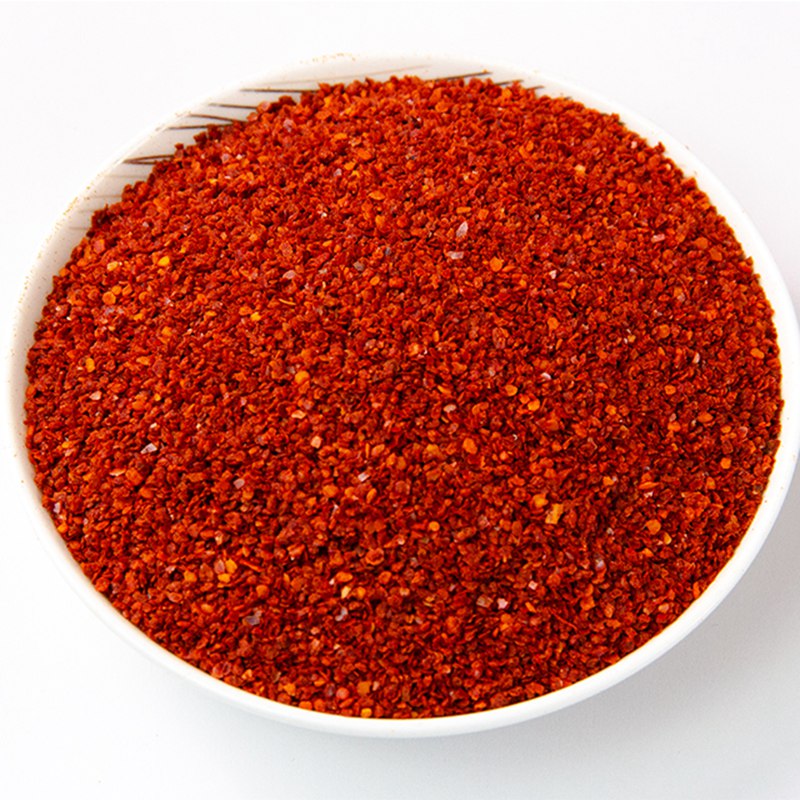
chili egweri - 18,000SHU
18,000SHUChili a gwepịara egwepịa bụ ihe okike 100% na-enweghị mgbakwunye ọ bụla, na-egosipụta agba uhie na-acha uhie uhie, ekpomeekpo pụrụ iche, ose na-agbanwe agbanwe, na ịdị mma pụtara ìhè. Ọ na-eje ozi dị ka isi nri ọzọ dị mma, na-enye ndị na-azụ ahịa ohere ịhazigharị ọkwa nke ose dị na efere ha dabere na mmasị onwe onye. Àgwà pụrụ iche nke chili anyị gwepịara ọnụ na-eme ka ọ bụrụ nhọrọ na-adọrọ adọrọ maka ndị na-anụ ọkụ n'obi.
Anyị chili anuahade awade customizable nhọrọ maka dị iche iche spiciness etoju, agba, urughuru size na nkwakọ. anyị na-agba mbọ nabata mkpa nhazi nhazi dị iche iche.
-
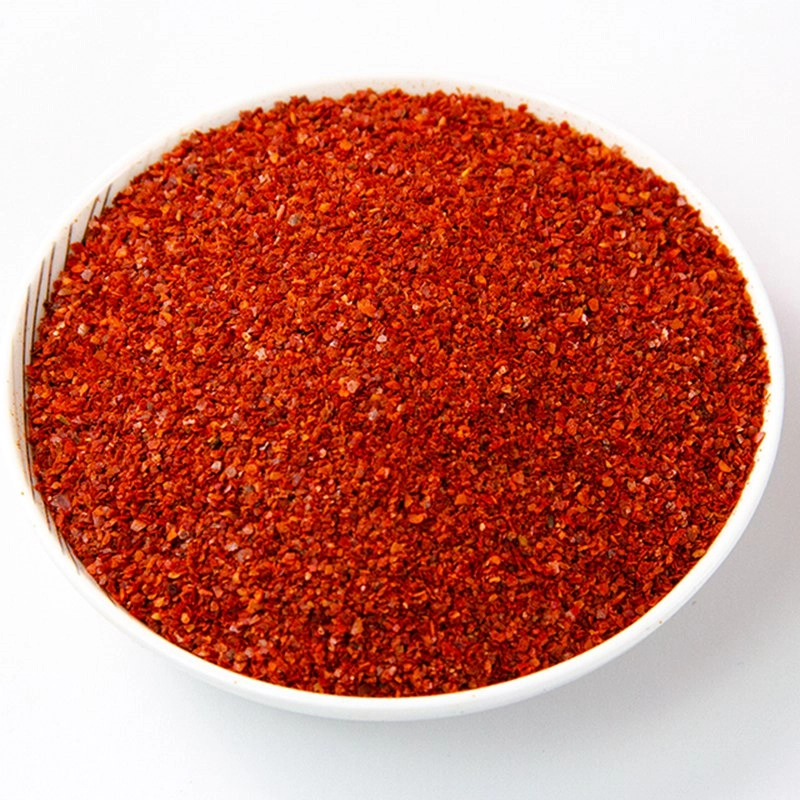
chili egweri - 15,000SHU
1,5000SHUChili a gwepịara egwepịa bụ ihe okike 100% na-enweghị mgbakwunye ọ bụla, na-egosipụta agba uhie na-acha uhie uhie, ekpomeekpo pụrụ iche, ose na-agbanwe agbanwe, na ịdị mma pụtara ìhè. Ọ na-eje ozi dị ka isi nri ọzọ dị mma, na-enye ndị na-azụ ahịa ohere ịhazigharị ọkwa nke ose dị na efere ha dabere na mmasị onwe onye. Àgwà pụrụ iche nke chili anyị gwepịara ọnụ na-eme ka ọ bụrụ nhọrọ na-adọrọ adọrọ maka ndị na-anụ ọkụ n'obi.
Anyị chili anuahade awade customizable nhọrọ maka dị iche iche spiciness etoju, agba, urughuru size na nkwakọ. anyị na-agba mbọ nabata mkpa nhazi nhazi dị iche iche.
What Is The Trick To A Good Chili?
Chili, a beloved spice used worldwide, is a versatile ingredient that adds depth, flavor, and heat to any dish. Known for its rich, spicy kick, chili peppers come in various forms, including fresh, dried, powdered, and as chili sauce or oil. Whether you're an adventurous cook or someone who enjoys adding a touch of heat to your meals, chili products offer the perfect solution.
Fresh Chili Peppers are vibrant, juicy, and packed with heat. From mild to extremely spicy varieties, fresh chilies can be sliced, diced, or used whole to infuse dishes with their pungent aroma. Great for stir-fries, salsas, and curries, fresh chilies add a fresh and bold flavor to your meals.
Dried Chili Peppers are perfect for slow-cooking and flavor extraction. When dried, chilies intensify their heat and smokiness. You can use them whole, ground into chili powder, or rehydrate them to create sauces and soups with a complex depth of flavor.
Chili Powder is a staple in kitchens around the world. A blend of dried chili peppers and other spices like cumin and garlic, chili powder adds a punch of heat and a savory aroma to dishes. Perfect for seasoning meats, soups, stews, and even grilled vegetables, chili powder offers convenience without compromising on flavor.
Chili Sauces and Oils are excellent for those who prefer a ready-to-use option. These products combine chili with ingredients like garlic, vinegar, or sesame oil to create flavorful sauces and oils that elevate your dishes instantly. Whether you like it sweet, tangy, or fiery, chili sauces and oils are perfect for dipping, marinating, or adding to your favorite foods.
Enhance your culinary creations with chili a bold, flavorful ingredient that brings spice and excitement to every meal!
Why Are Peppers Called Chili?
The term "chili" is often used to refer to various types of hot peppers, but its origin and usage are a bit more complex. Here’s why peppers are called "chili":
1.Etymology from Nahuatl (Aztec language):
The word "chili" comes from the Nahuatl language, which was spoken by the Aztecs and other indigenous peoples in Mesoamerica. In Nahuatl, the word for pepper is "ch? lli". The Aztecs and other native groups in Central and South America cultivated and used chili peppers long before Europeans arrived, and they were integral to their cuisine.
When Spanish explorers encountered these peppers in the Americas in the 15th and 16th centuries, they adopted the Nahuatl word "ch? lli" to describe them. The term eventually made its way into other languages, including English, where it became commonly used.
2. Naming Confusion and Global Spread:
The word "chili" is used differently around the world. In many places, "chili" refers to the fruit of the Capsicum plant, which can be used fresh, dried, or powdered to add heat to food. However, when used in the context of chili con carne (the famous spicy stew), the name "chili" specifically refers to the dish made with ground meat, chilies, beans, tomatoes, and spices.
In the U.S. and many English-speaking countries, the term "chili" has become synonymous with hot peppers, especially Capsicum annuum, which includes common varieties like jalapenos, serranos, and cayennes. However, in other parts of the world, like India and some parts of Asia, the term "chili" often refers to the spicier varieties of Capsicum that are commonly used in their cuisines.
3. "Chili" vs. "Chili Pepper":
In the 17th century, when Christopher Columbus brought the peppers back to Europe, they were initially thought to be a type of pepper (which they resemble in taste and appearance). The name “pepper” had already been used to describe the spicy fruit of the Piper nigrum plant (black pepper), and this led to the widespread use of the term "pepper" for the Capsicum family, despite them being botanically unrelated. Over time, the term "chili pepper" was adopted in many languages to differentiate the spicy peppers from black pepper.
In this sense, "chili" became shorthand for chili pepper, the pepper that imparts heat, especially from the Capsicum family, which includes many varieties of peppers that vary in heat intensity.
4. Cultural Influence and Usage:
The spread of chili peppers around the world, particularly after the Columbian Exchange (which was the exchange of plants, animals, and cultures between the Americas and the Old World), played a significant role in shaping global cuisine. As chili peppers became more commonly used in a wide range of dishes, the name “chili” was often applied to dishes and recipes that incorporated these peppers, such as chili con carne, chili oil, and chili sauce.
In summary, "chili" is derived from the Nahuatl word for pepper, "ch? lli", and has evolved in usage due to its widespread adoption in cuisines around the world. It’s used to refer to both the pepper itself and the dishes made with it, particularly those that are spicy and contain peppers.








